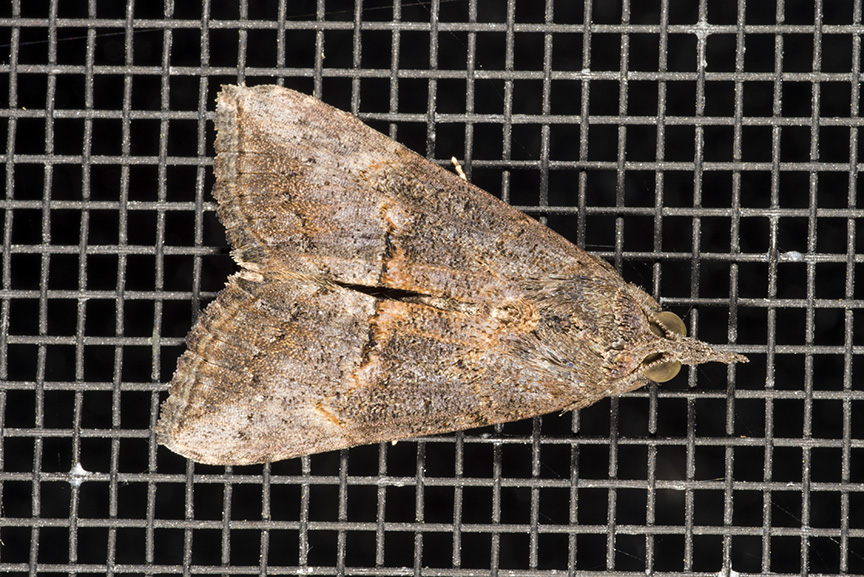Most likely you have seen some black moths flying around farms, homes, and yards, especially to lights at night. This one prompts questions from time to time as we have “outbreak” years of this non-pest. These moths are actually mottled grayish-black and when at rest they have the triangular shape of a stealth fighter jet. These are likely the adult green cloverworm (Noctuidae: Plathypena scabra).
The slender green caterpillars feed on soybean foliage, as well as alfalfa, clover, and other leguminous plants – there are a great many of these plants around the Indiana countryside! Normally, fungal pathogens, as well as insect parasites and predators, keep green cloverworm populations at low levels in soybeans. For unknown reasons, those natural controls were not as effective this year and allowed the cloverworms to increase in number. The result is lots of the adult moths flying around lights and residences.
These moths are only a nuisance and will not harm people, houses, or yards . The moths will pass the winter in leaf litter and/or other sheltered areas and next spring the survivors will emerge and begin egg laying. They are not generally a pest in Indiana, but you can probably find a few in each soybean field if you look hard enough.



